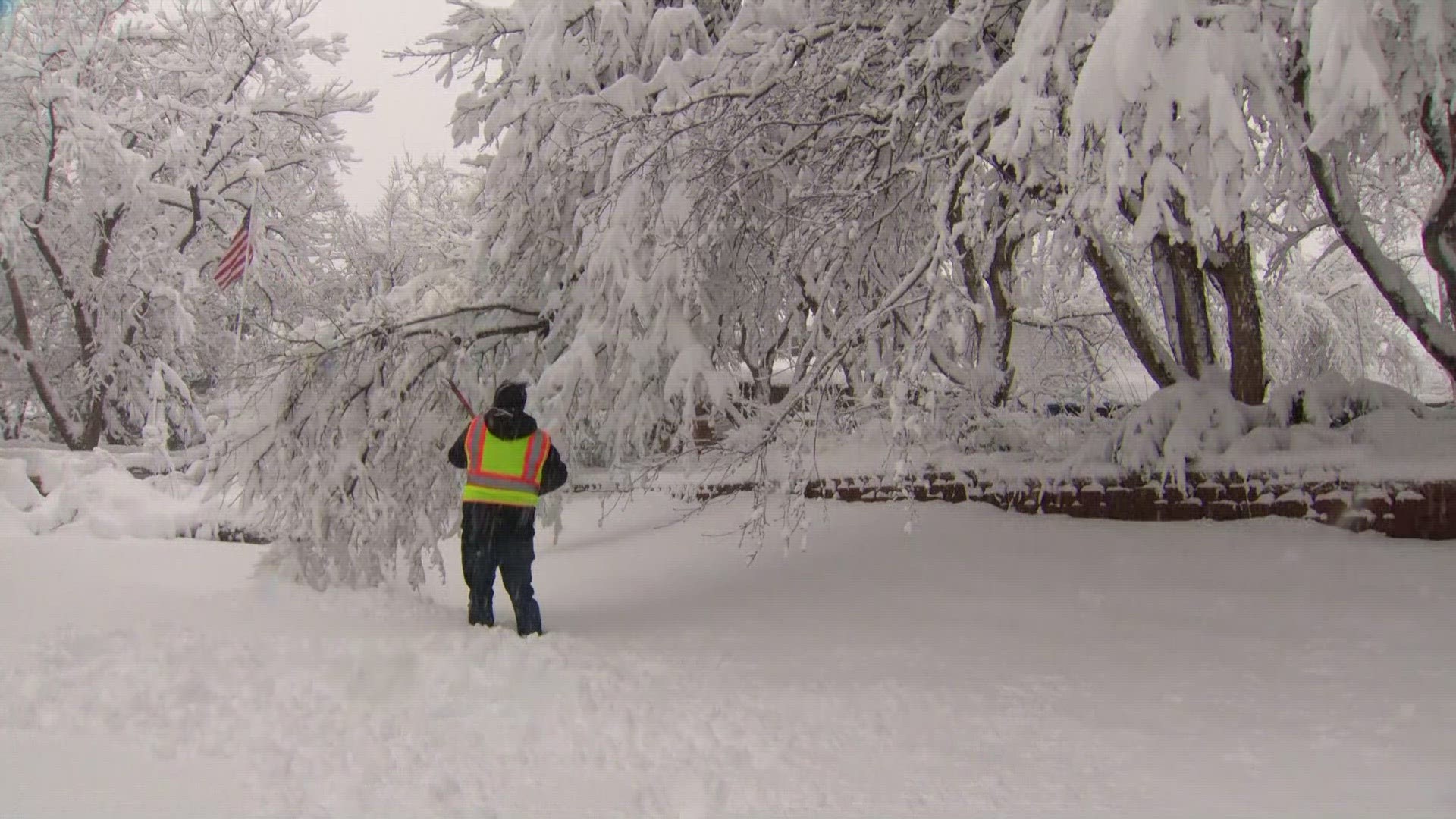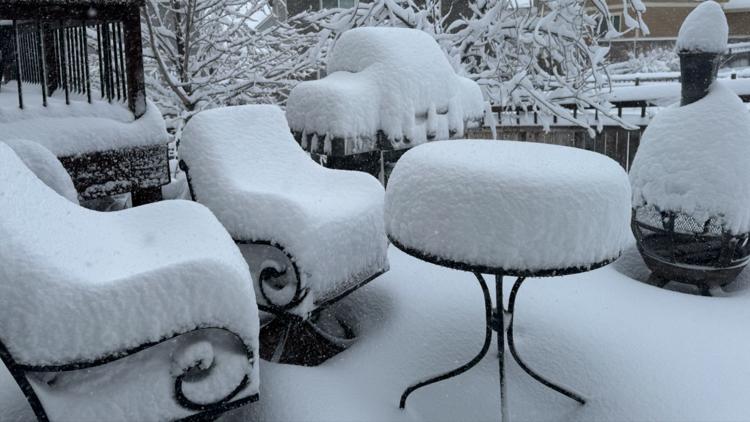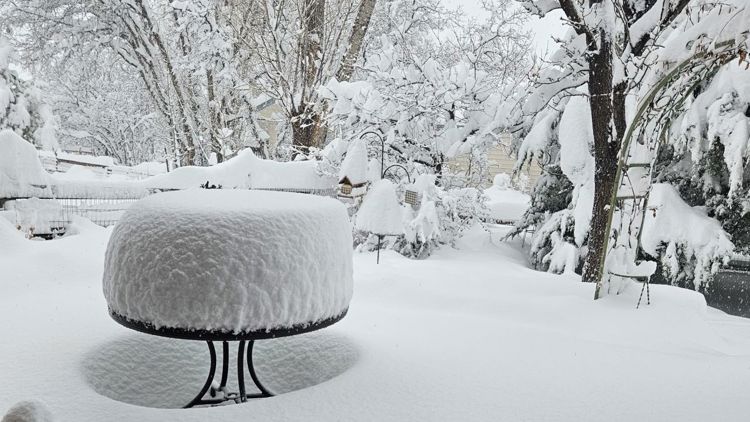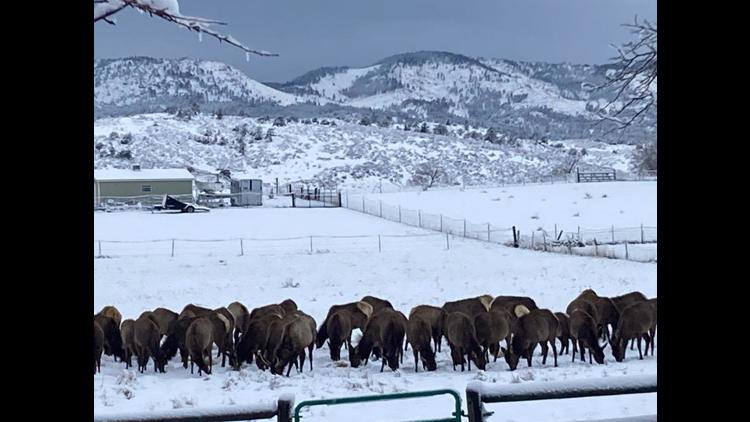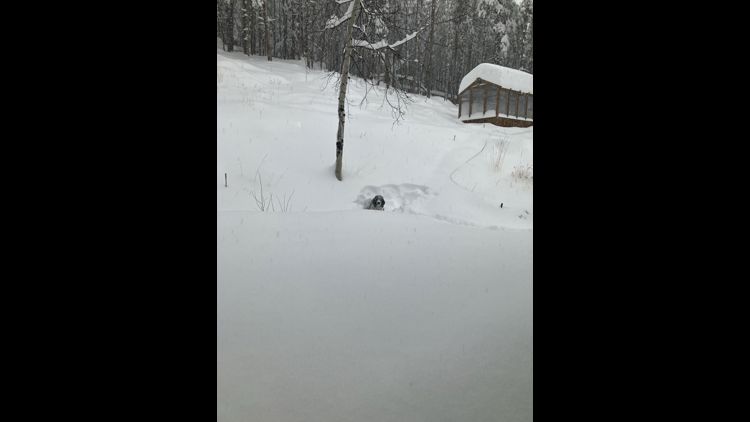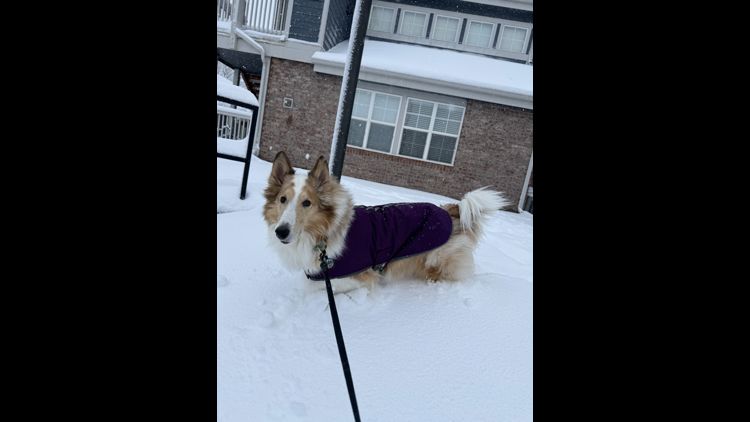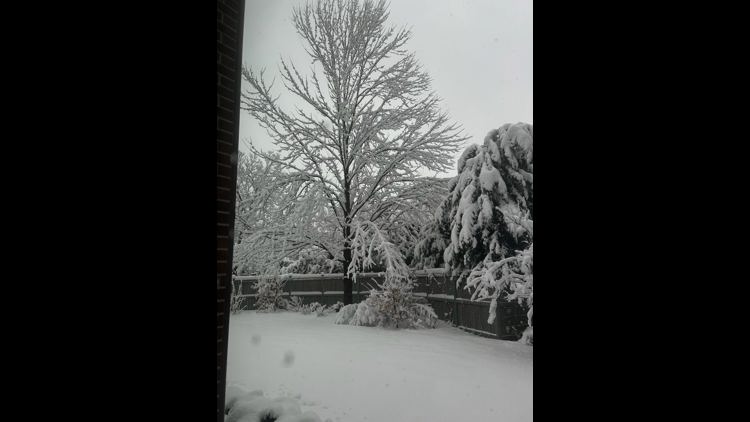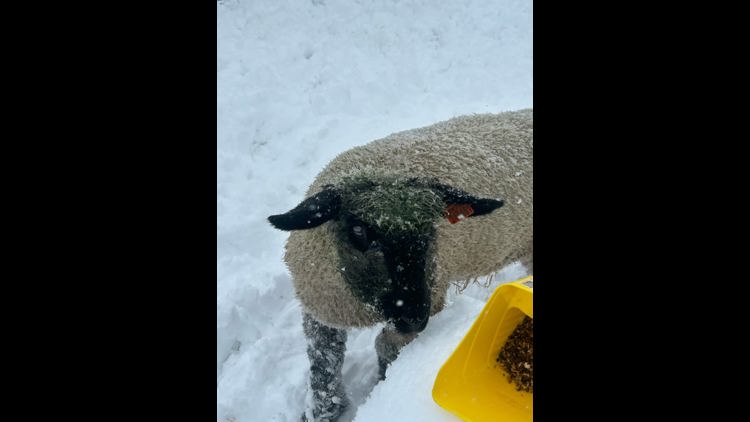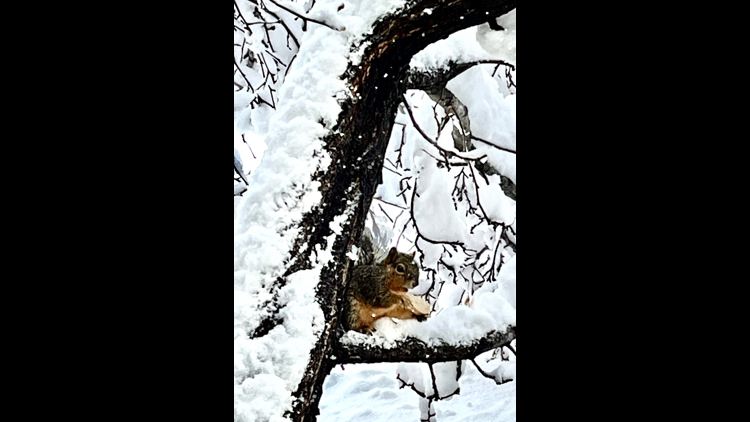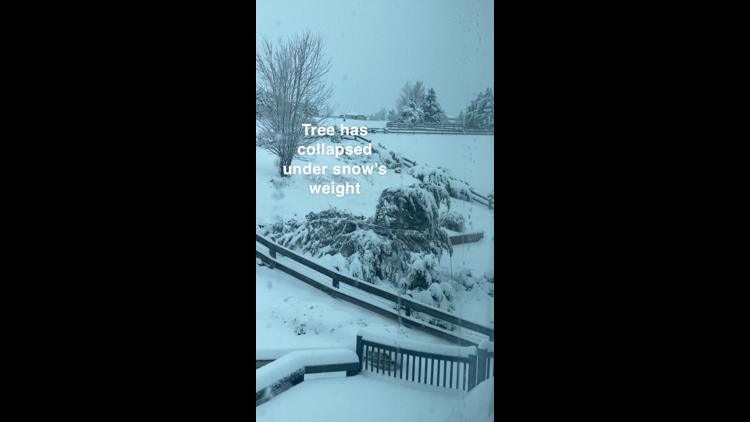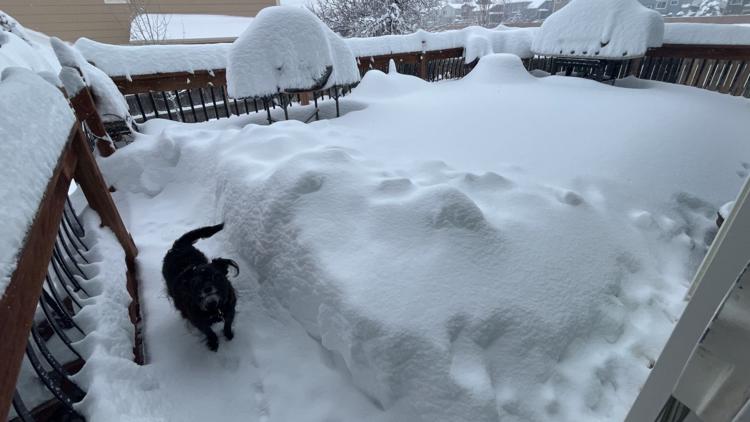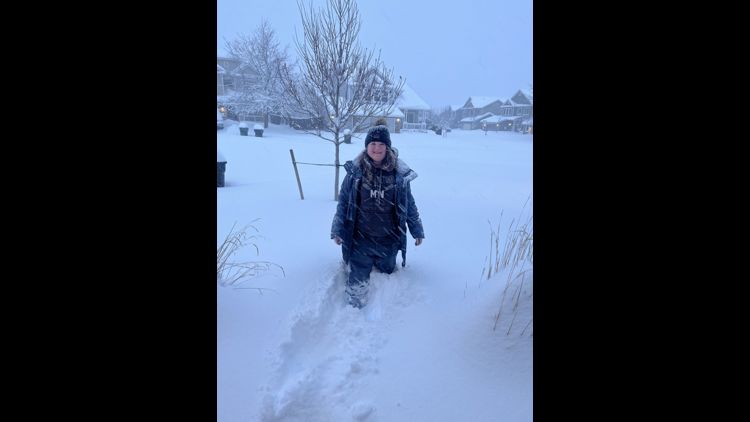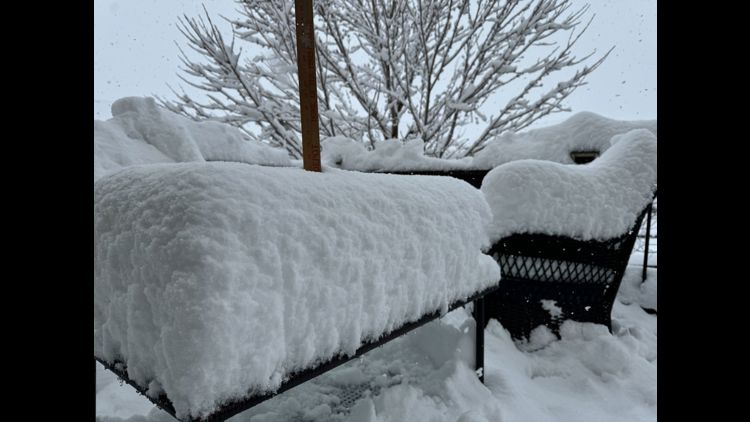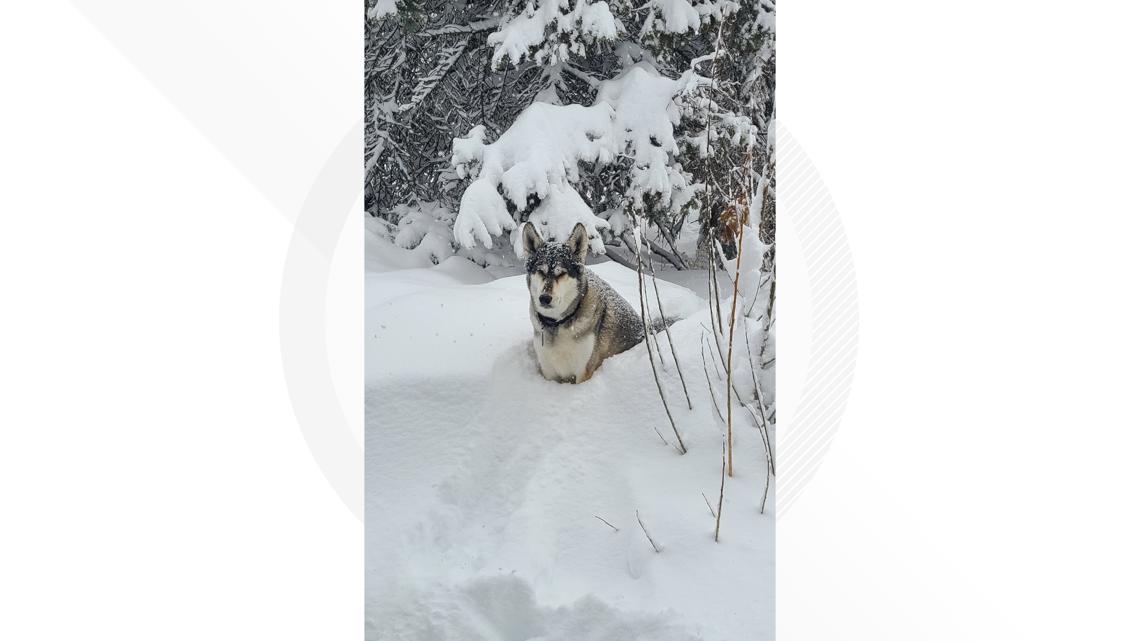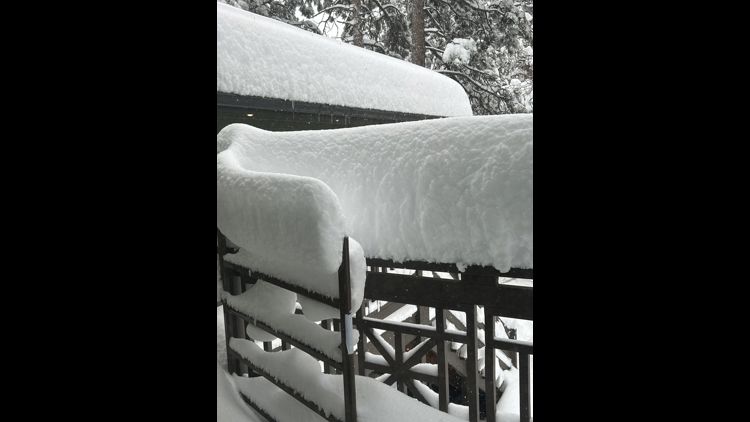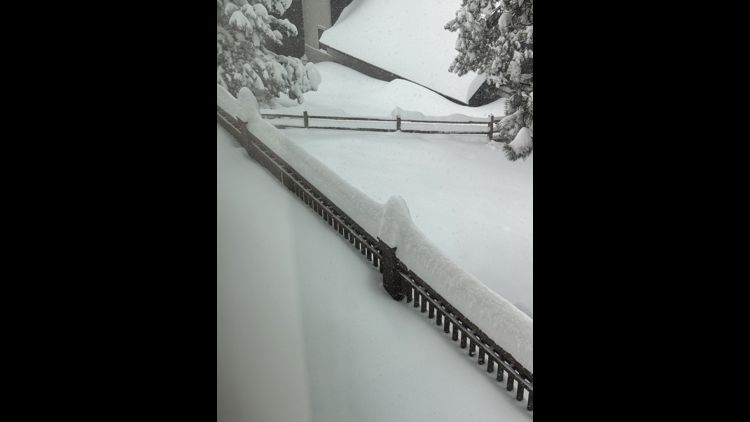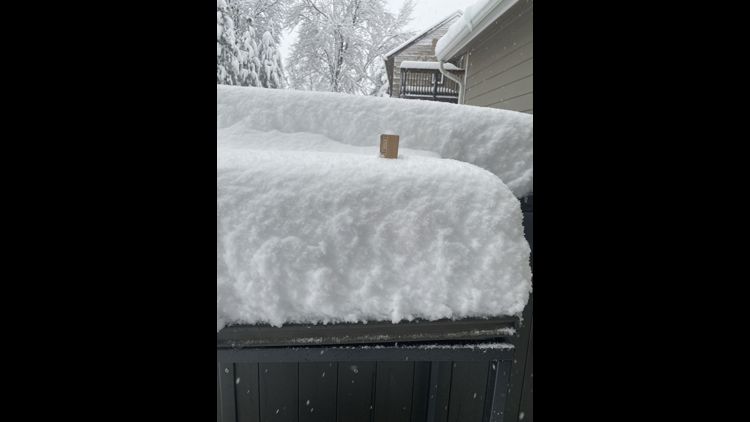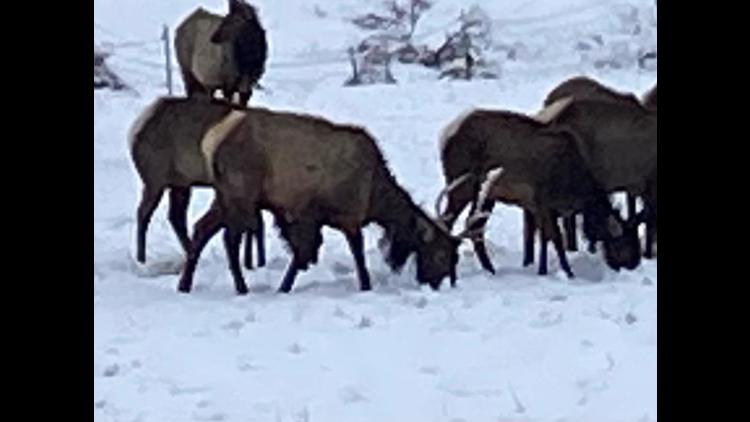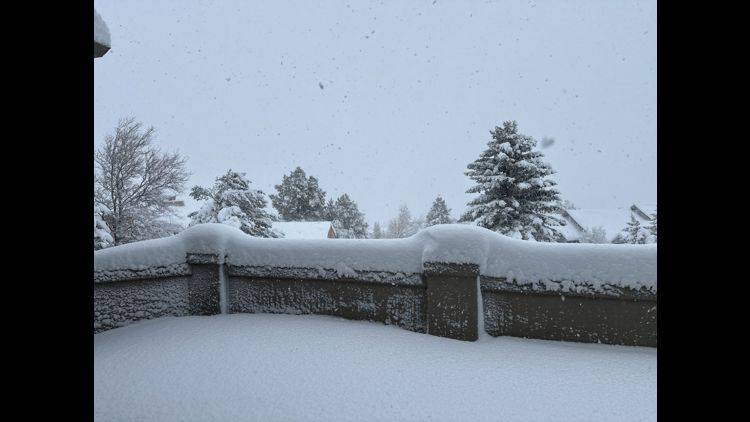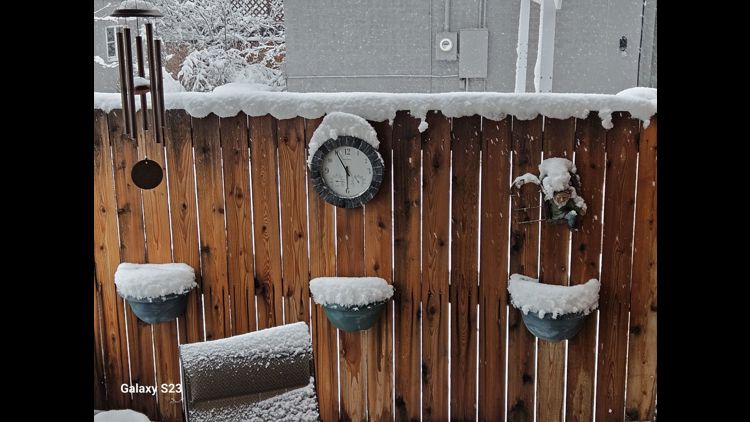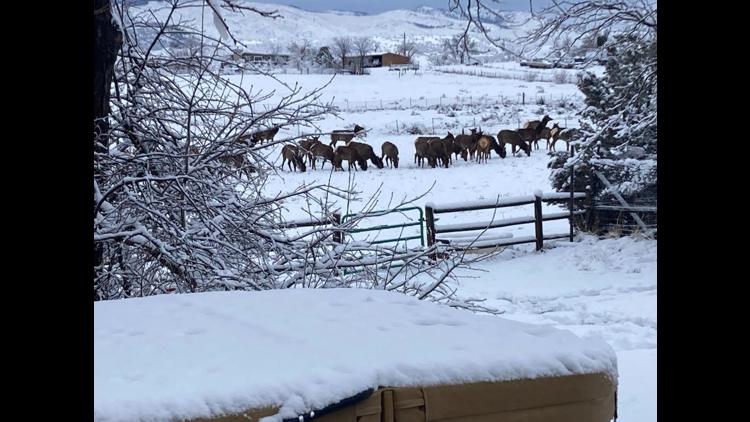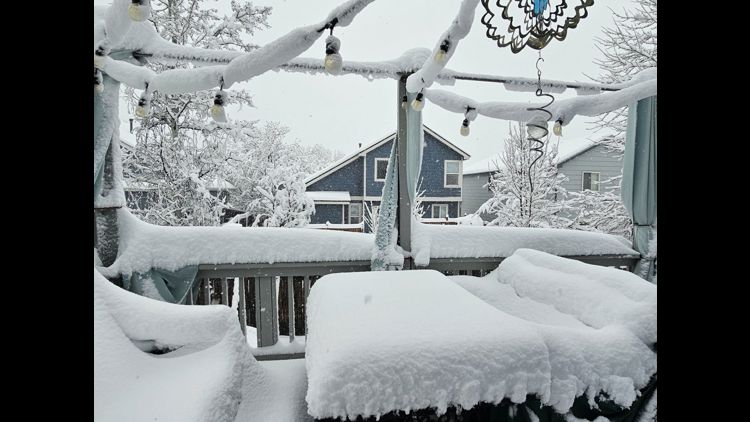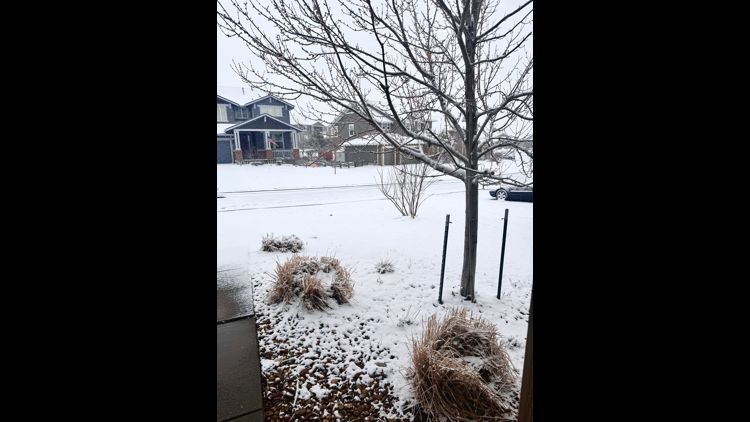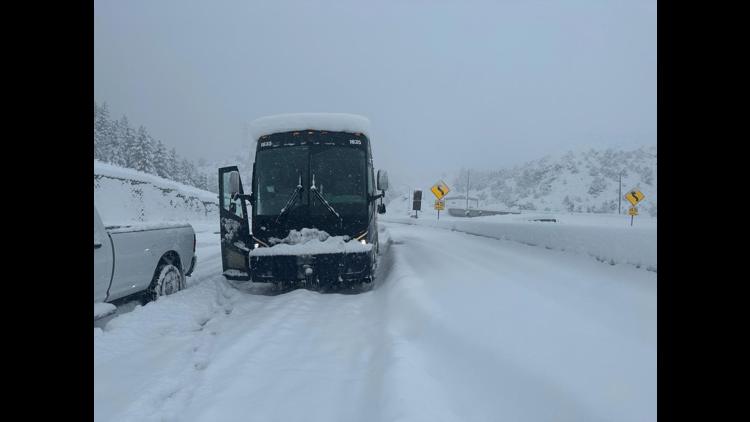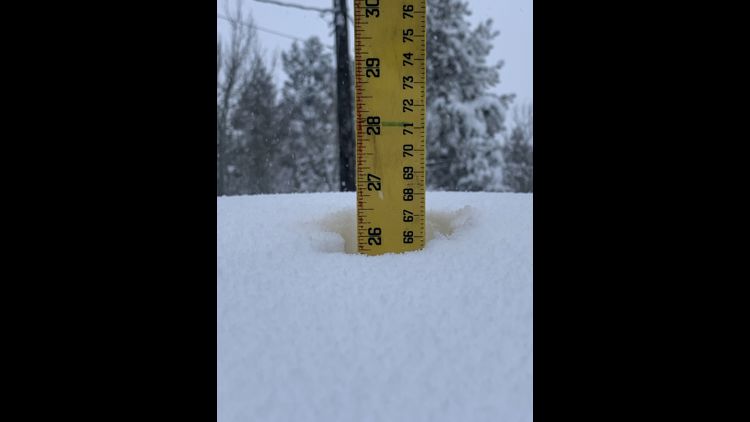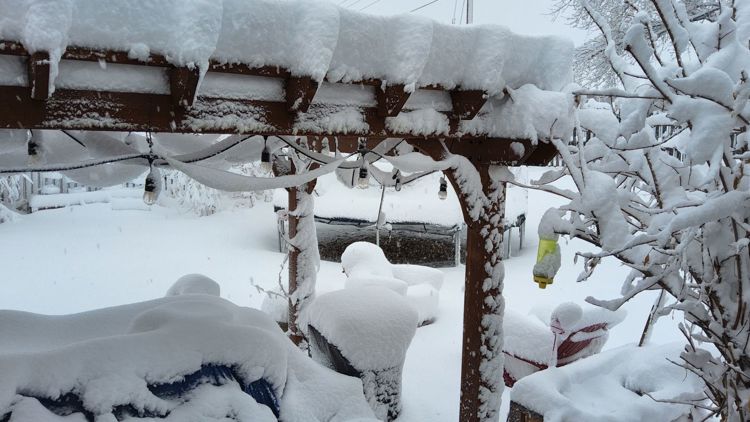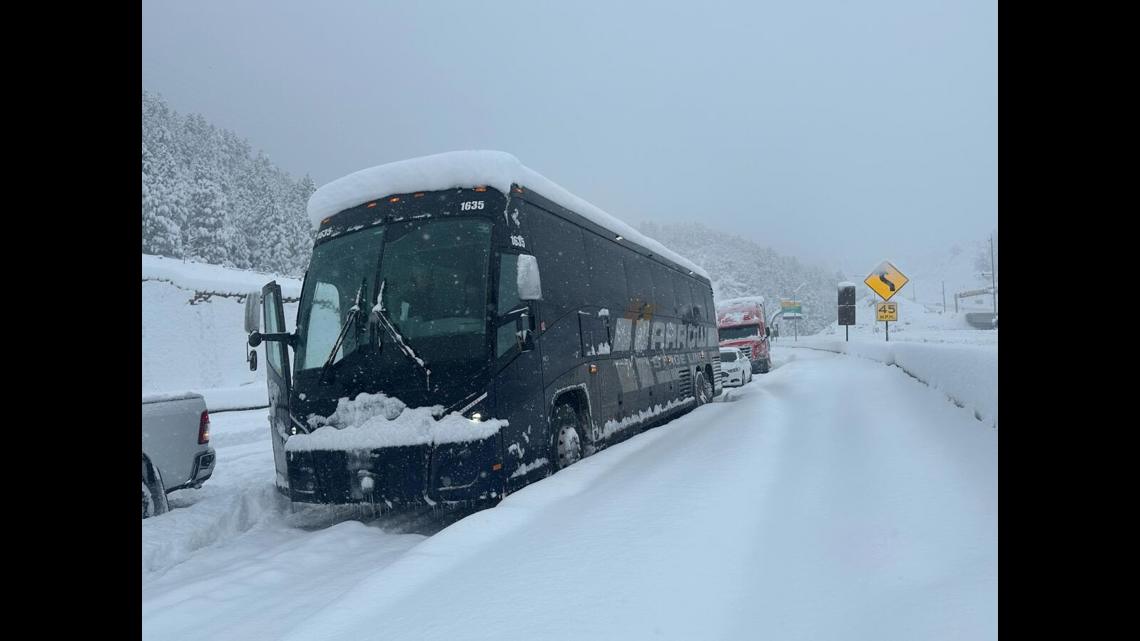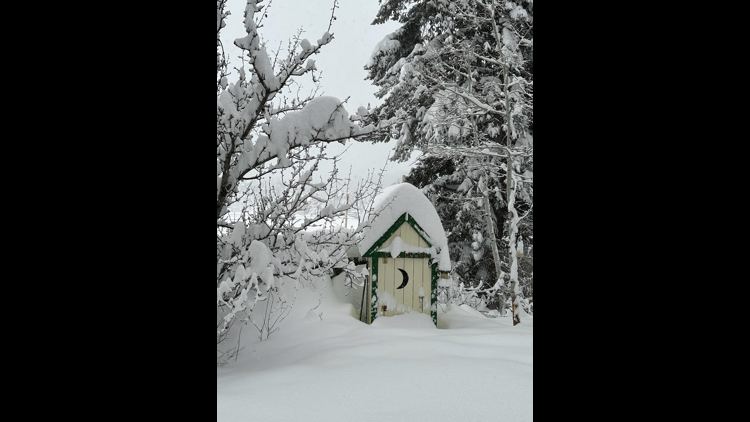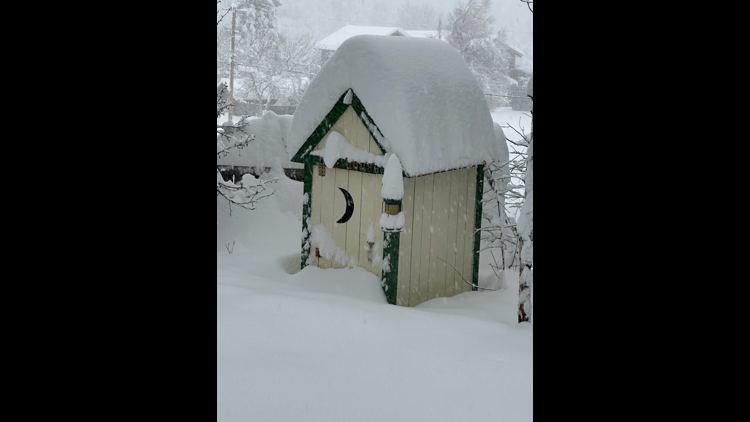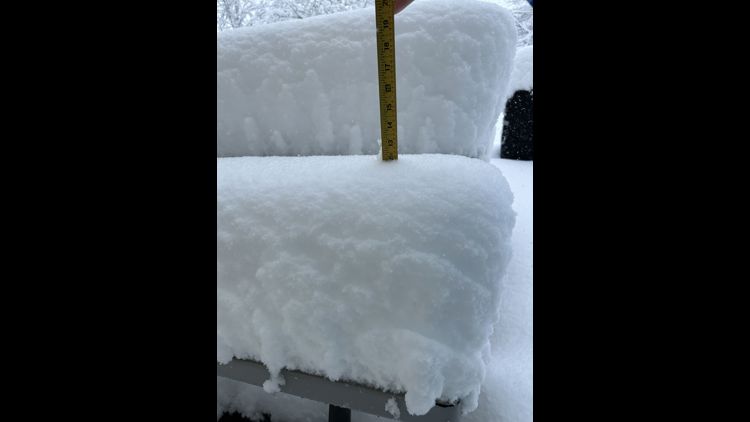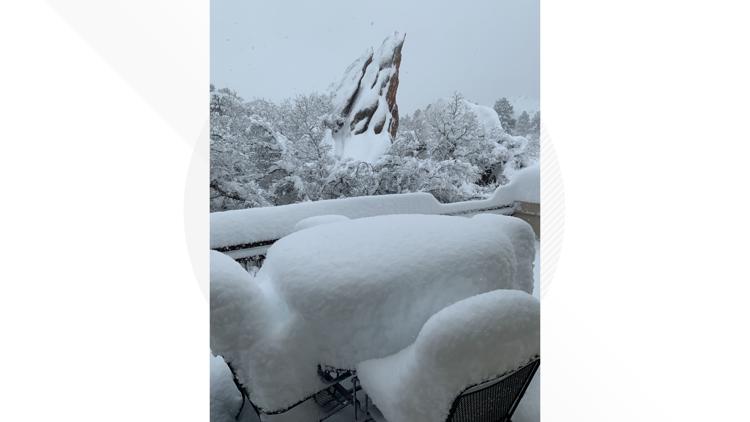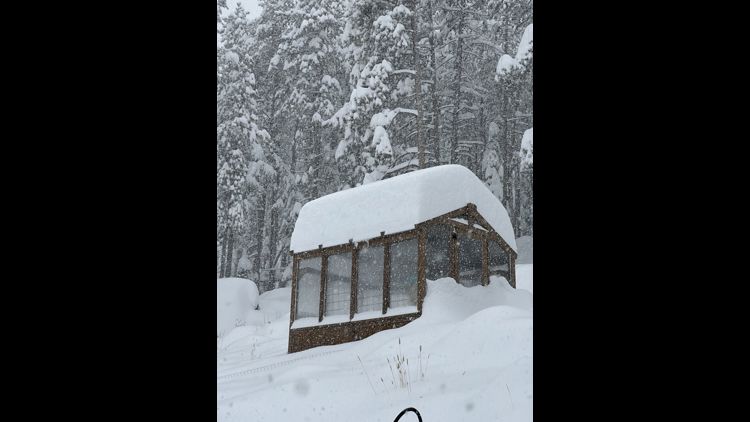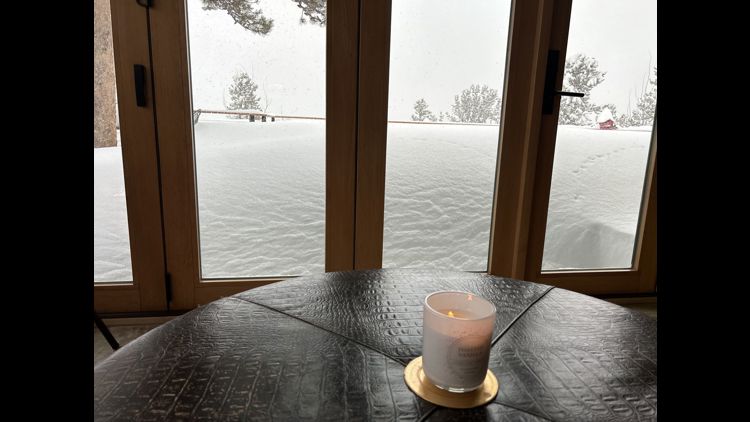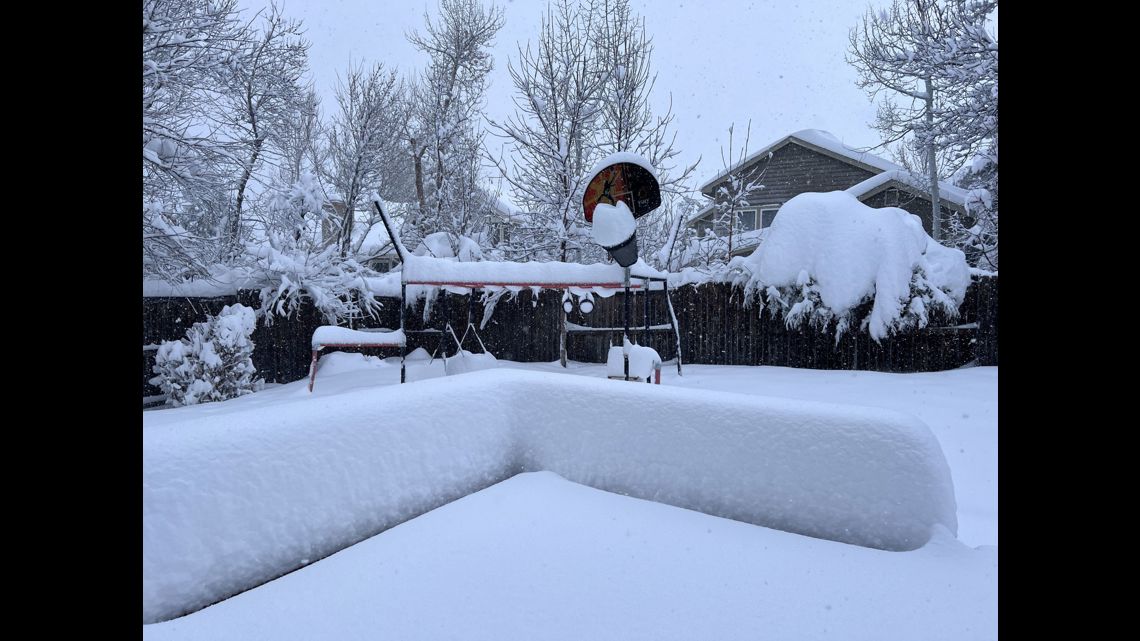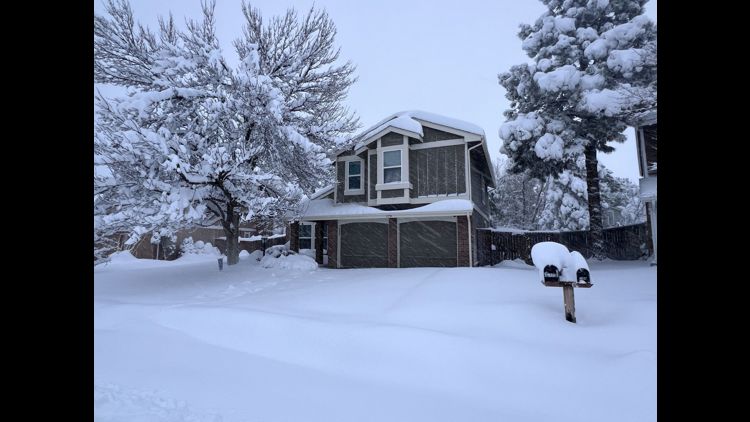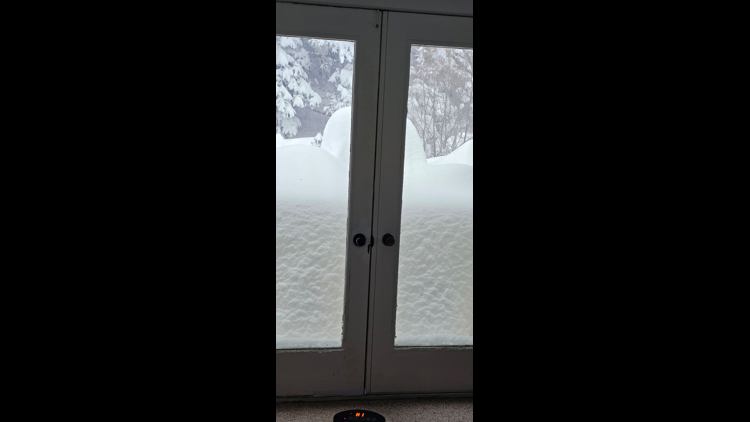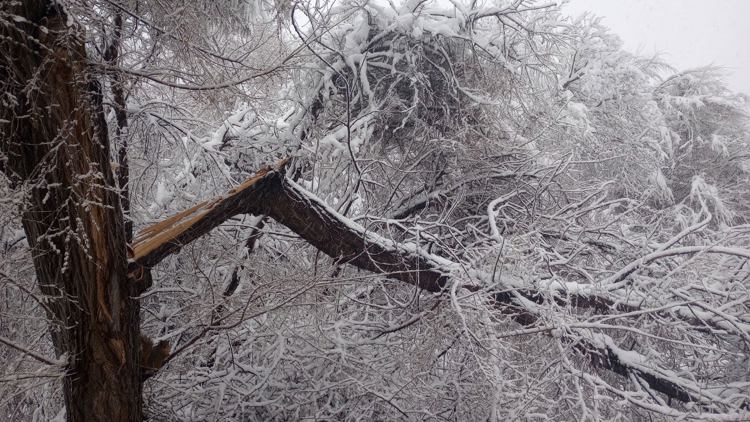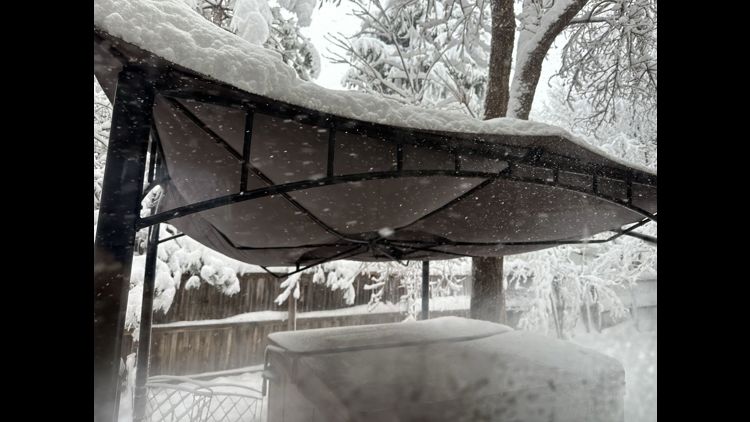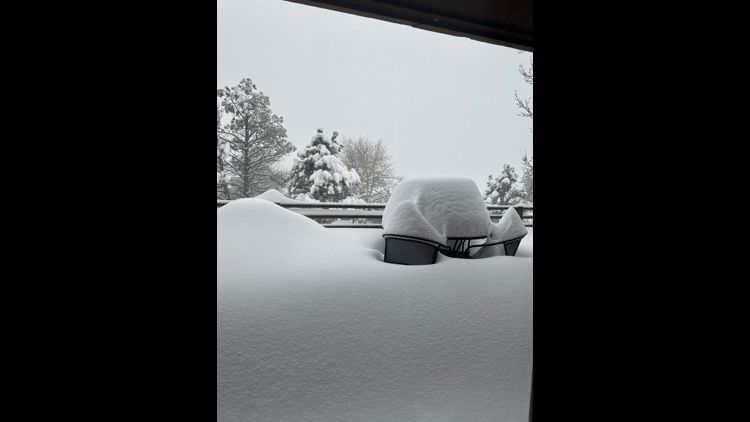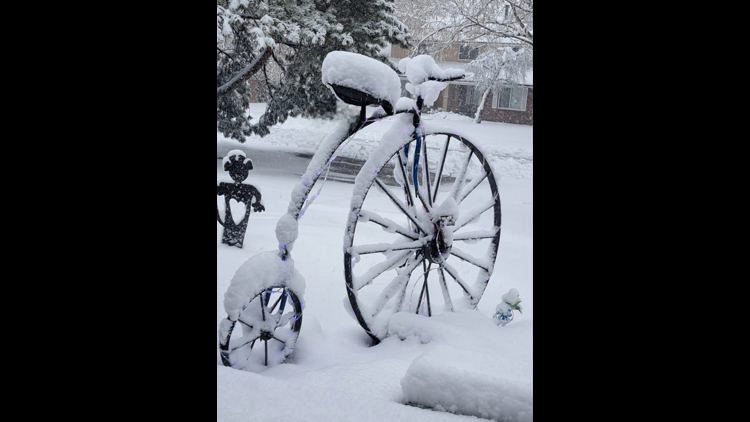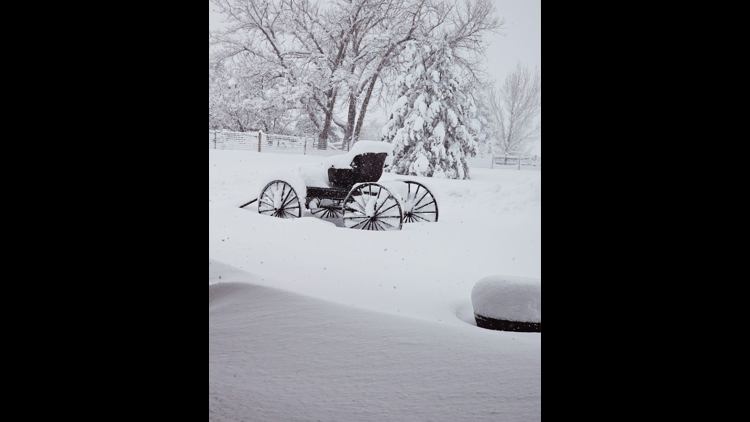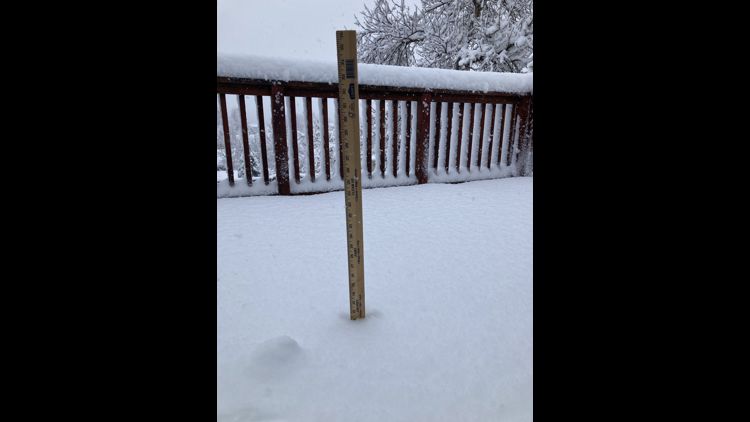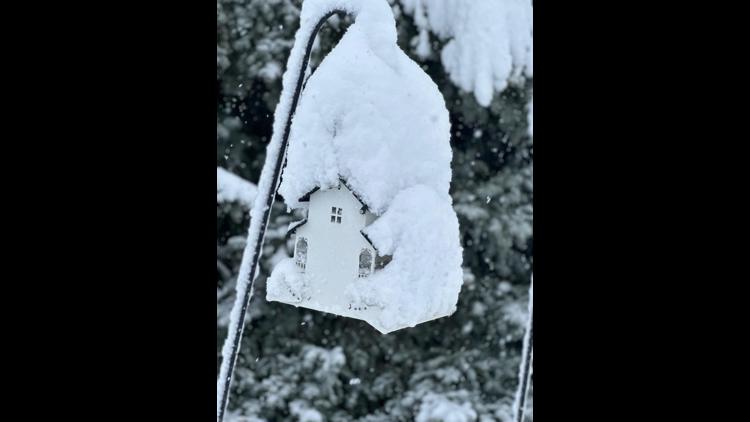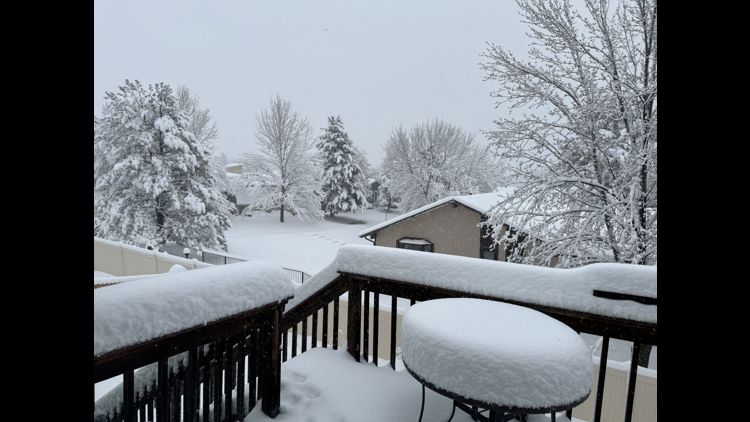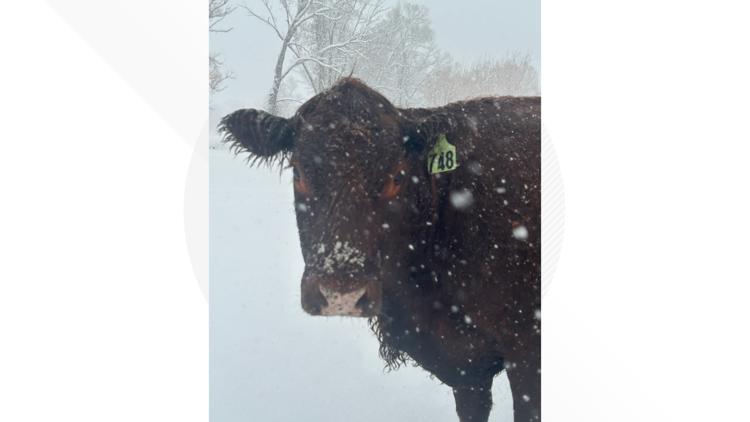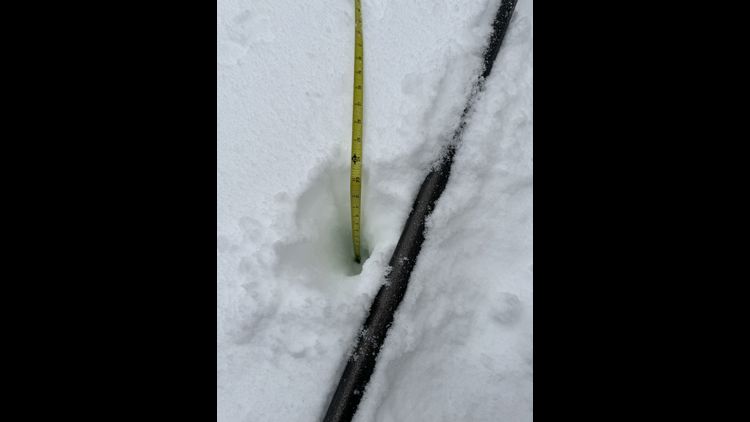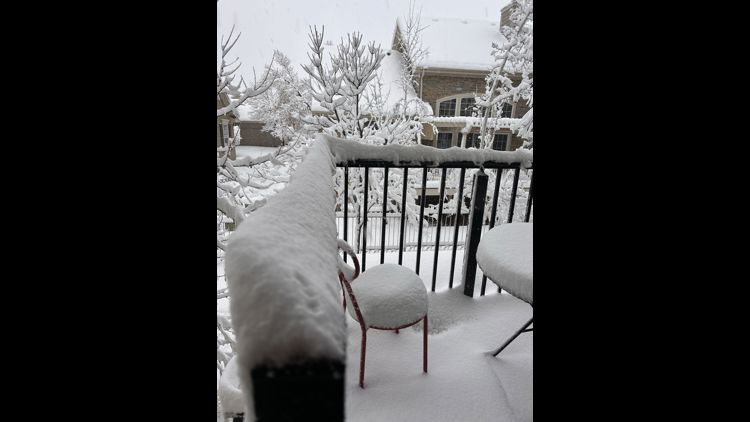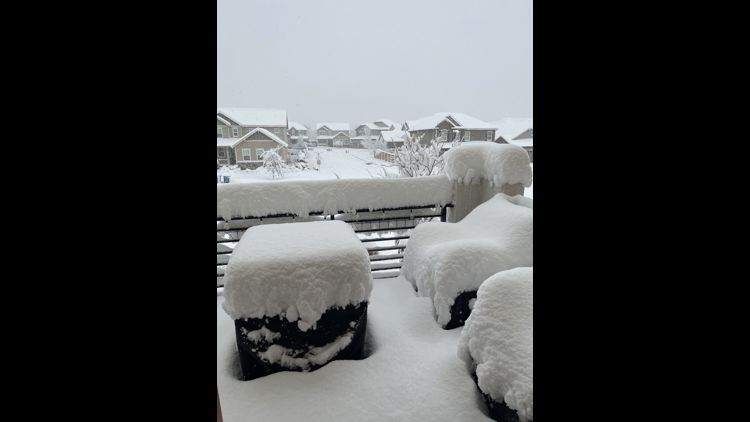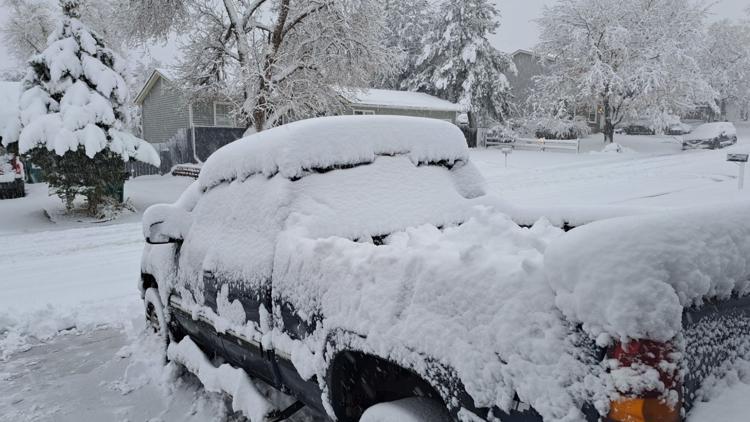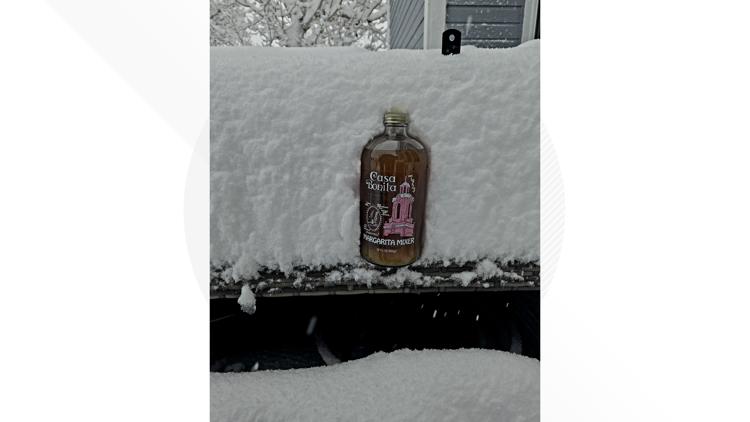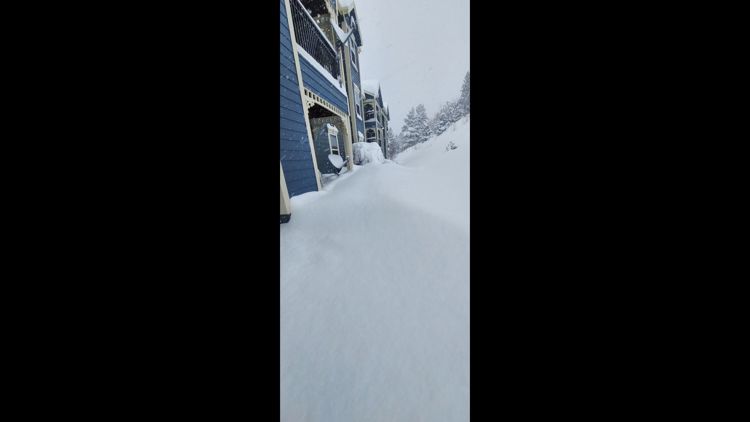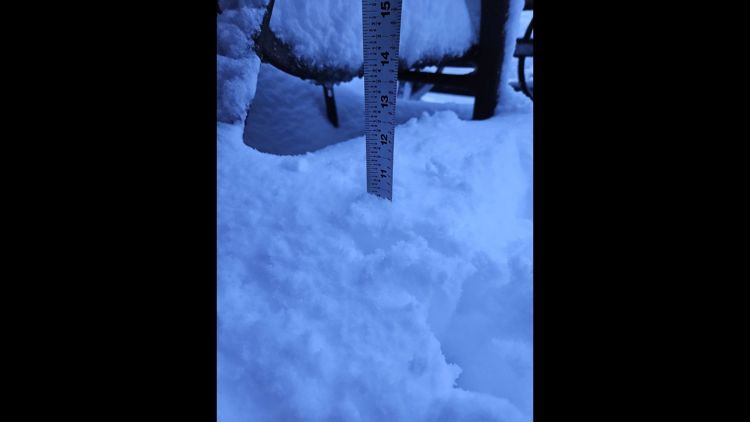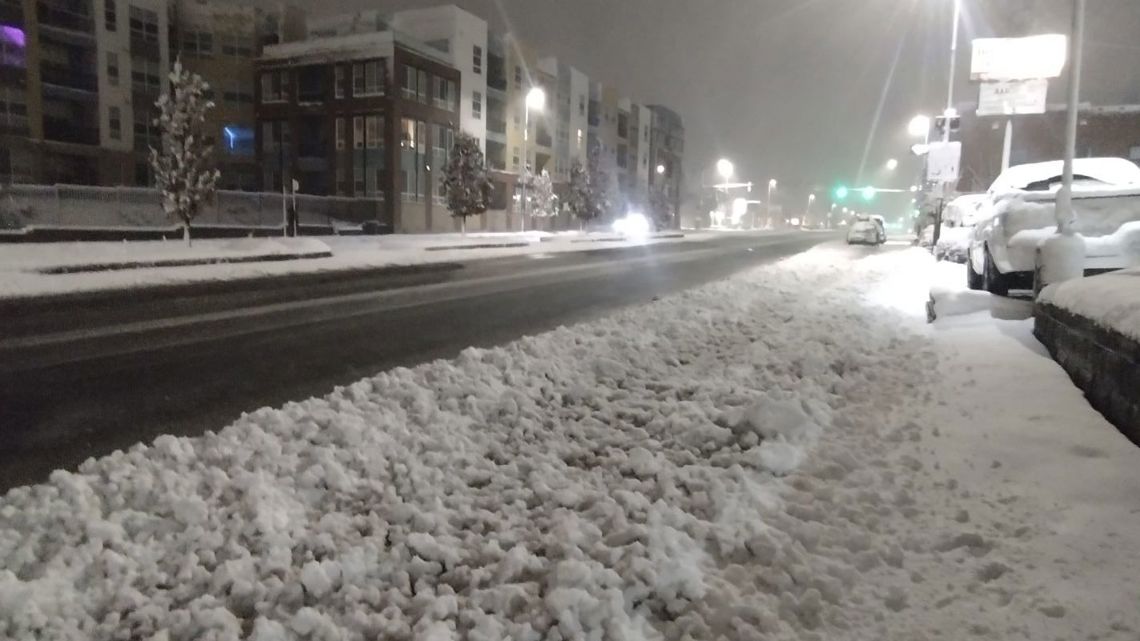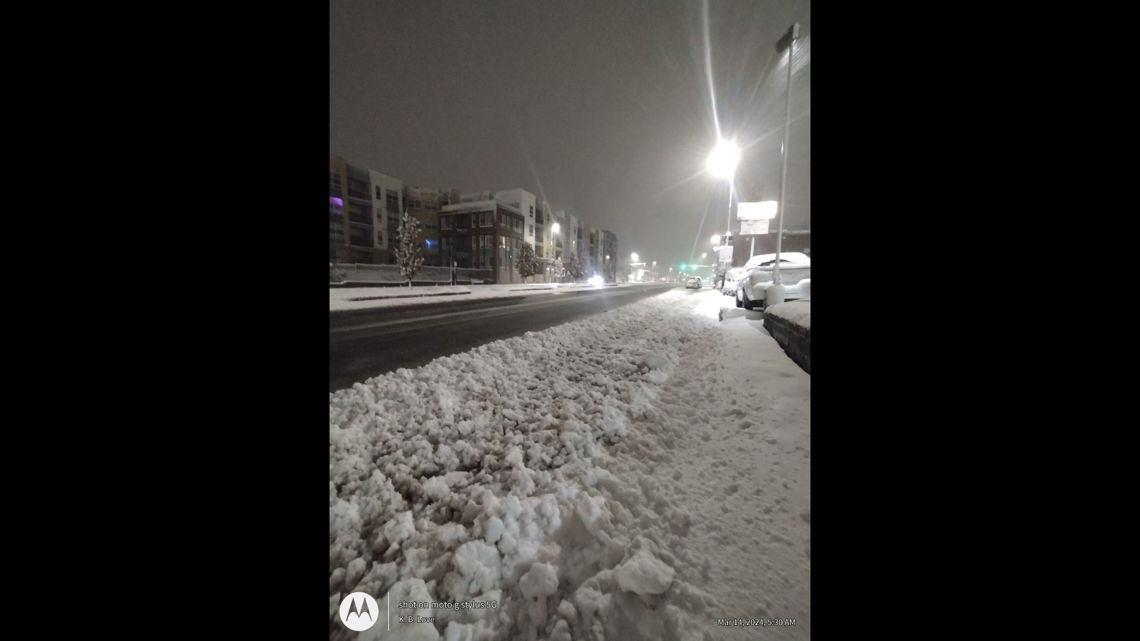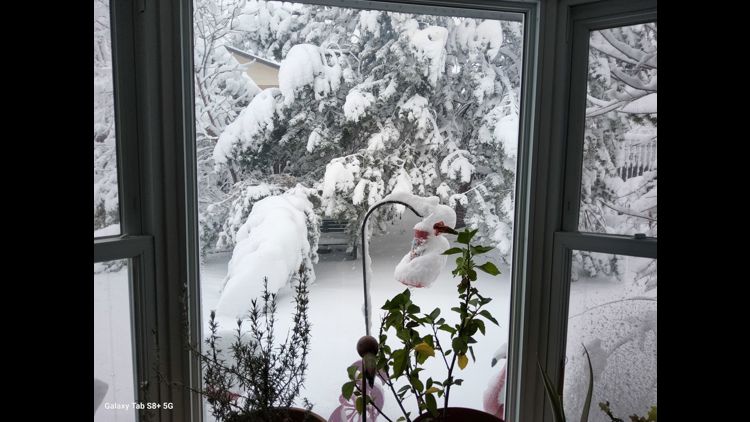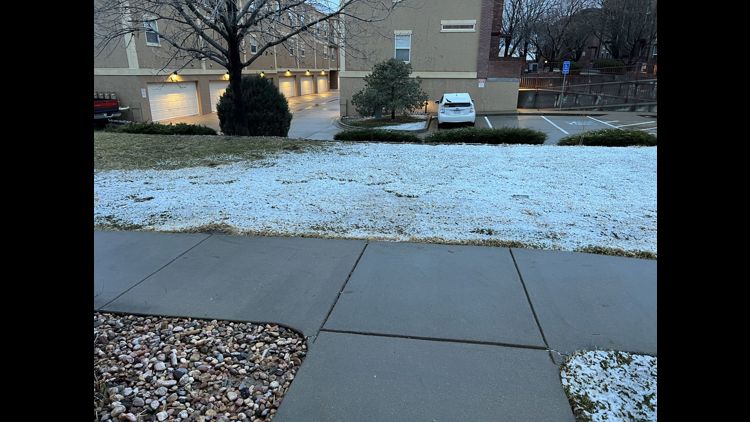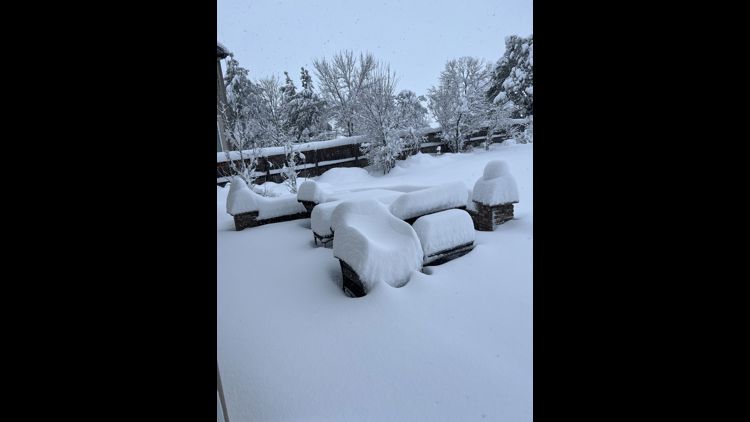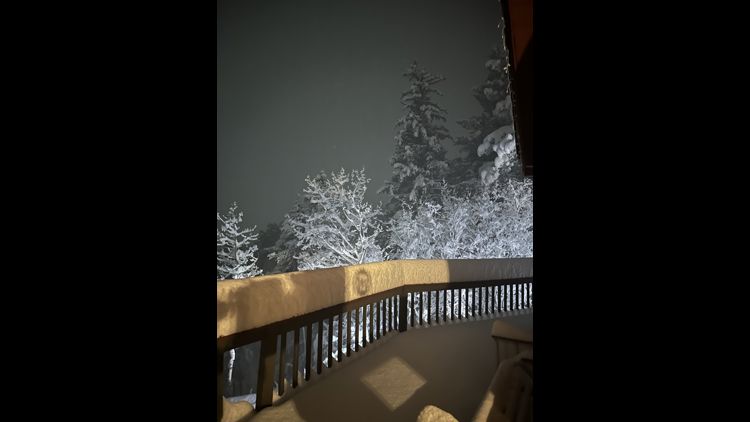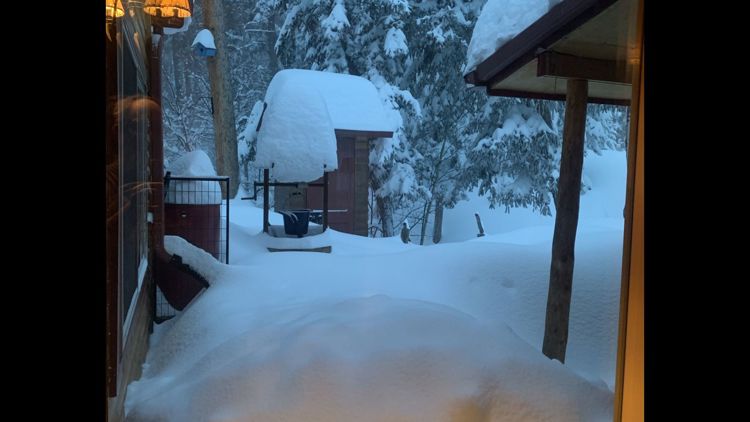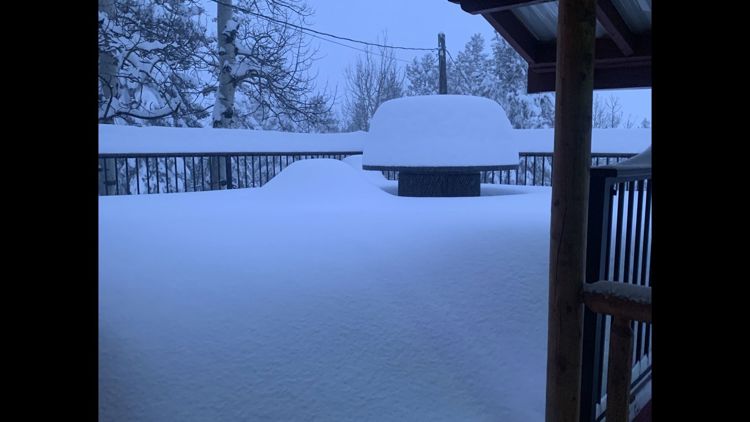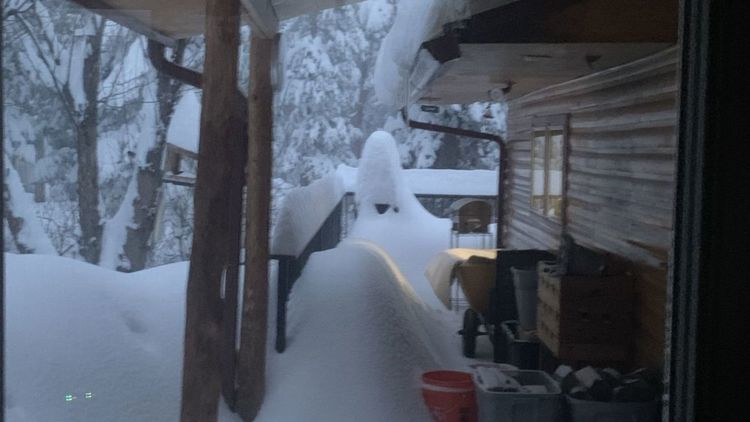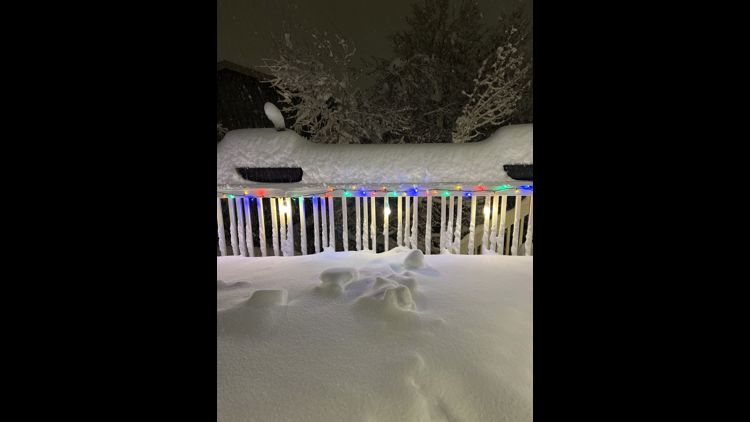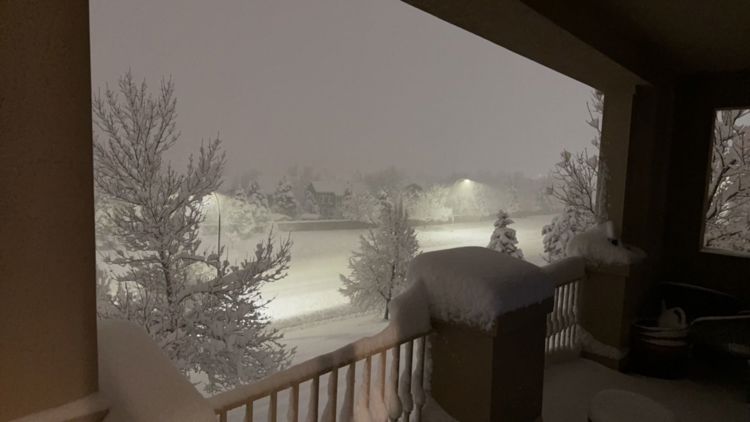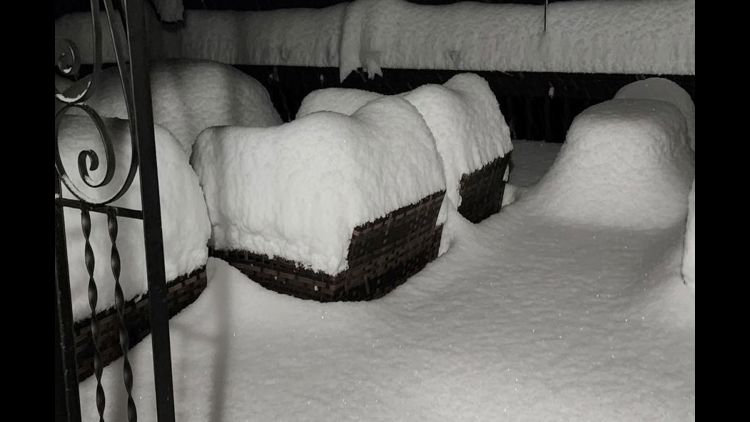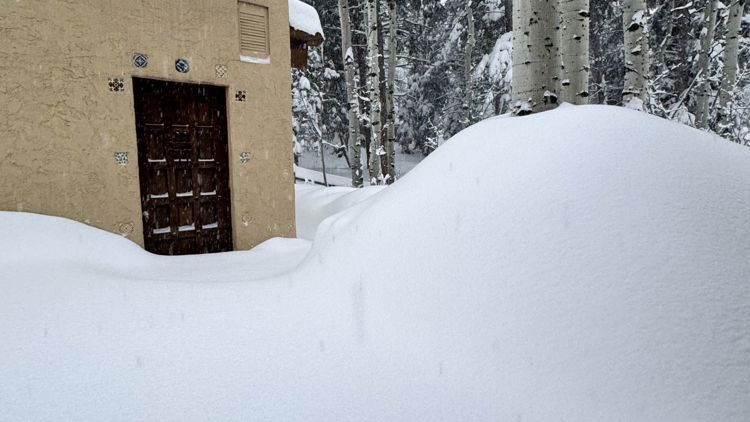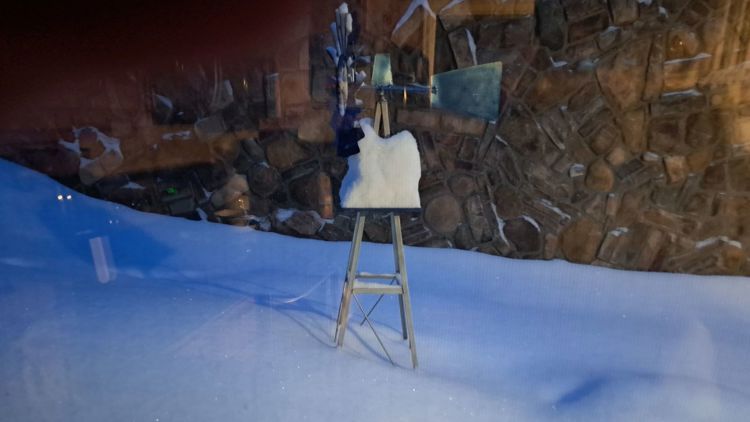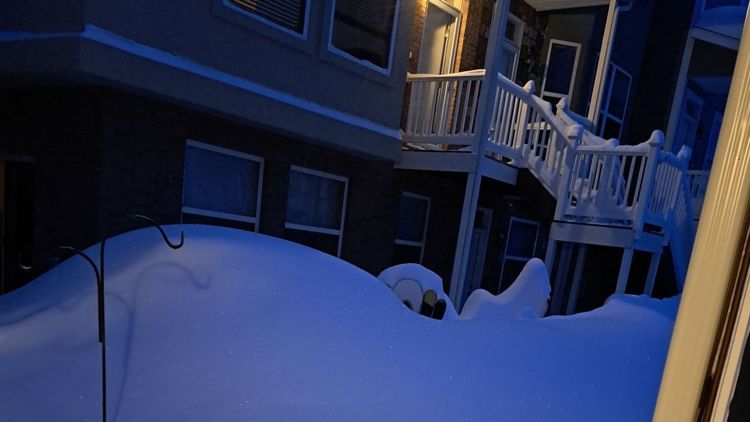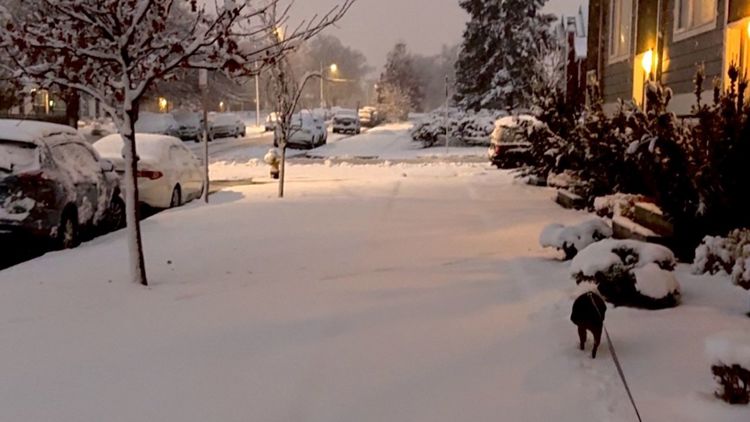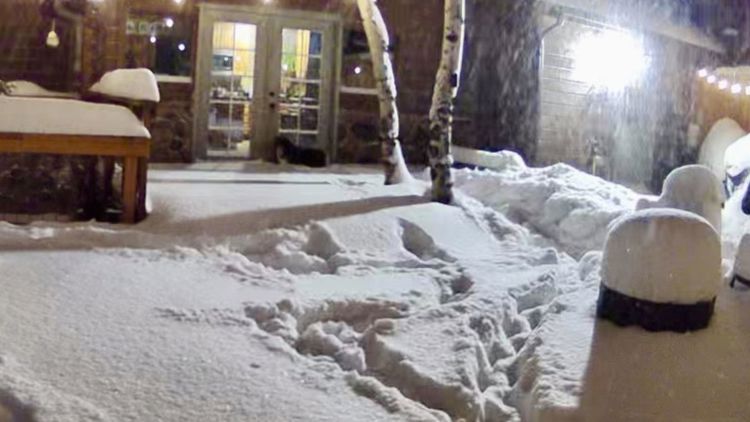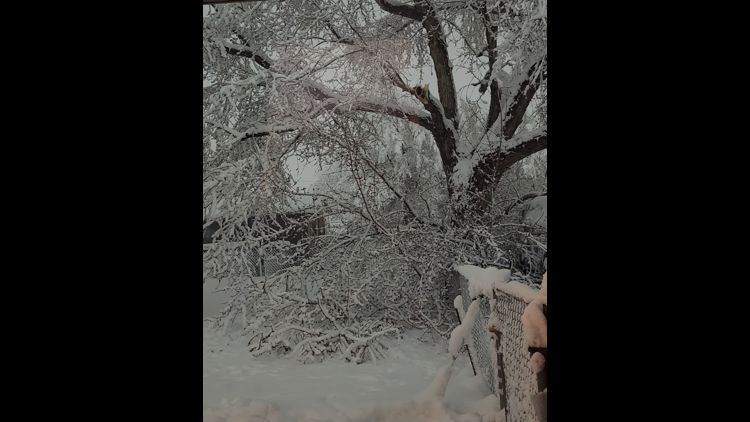COLORADO, USA — A strong, winter storm could leave us with inches of wet snow that could lead to a lot of broken branches.
David Rhine, an arborist of 38 years who works with Savatree, a lawn and tree care service, said heavy, wet snow could pose a problem for property and powerlines.
"When we get the heavy snow events, that bend tends to collect a lot of heavy snow, and once the leverage gets to the point where it can’t handle that load, it’ll break," Rhine said. "Sometimes it'll just break off and fall straight down with a big crack, but either way anything underneath it, there's a lot of weight, and it'll crush it."
Tips for removing snow from trees:
- Be aware that accumulating snow, ice, or wind could cause limbs to break and fall at any time.
- Check to make sure the tree is safe and clear of all utility lines prior to removing snow.
- Do not attempt to shake snow off a tree if a utility line is going through its branches or is within contact distance.
- If the tree is clear of utility lines, use a broom to remove as much snow as possible from branches by brushing off or gently shaking. Avoid large, rapid movement as this could cause the limb to break.
- Do not attempt to climb a tree or use a ladder to reach higher limbs.
If it appears the tree has fallen on powerlines, it's best to leave it alone and wait for the utility to come and clear it.
"The number one thing is safety," Rhine said.
9NEWS viewers share snow day photos
Here are some other tips for taking care of snow-damaged trees from the Colorado State Forest Service:
- Check for hazards. Before approaching the tree, make sure your surroundings are safe. Check for downed utility lines and avoid standing under broken or hanging branches.
- Contact city officials if necessary. Trees between the street and a city sidewalk may be the responsibility of city crews.
- Assess the damage. If a tree is healthy overall and still possesses its leader – the main upward branch – most of its major limbs and 50% or more of its crown, the chances are good for a complete recovery.
- Be careful knocking snow off branches. It might be tempting to just take a broom and whack at it, but this might cause branches to break. If you must remove snow, gently push up on branches from below to prevent adding additional stress.
- Remove broken branches. This minimizes the risk of decay and insects or diseases entering the wound on the tree. Prune at the branch collar – the point where a branch joins a larger branch – and be mindful of potential pent-up energy if the branch is twisted or bent.
- Don't over-prune. Trees might look unbalanced and uneven with damaged branches removed. Trees quickly grow new foliage that hides most bare areas.
- Don't try to do it all yourself. If the job requires running a chainsaw overhead, sawing from a ladder or removing large branches or entire trees, contact an insured, certified arborist.
Here are some more tricks for coping with snow depending on the type of plant involved:
Deciduous trees
- Damp snow will cling to every branch and twig, and the cumulative effect can lead to cracked and broken limbs. If it's possible to reach high in the tree with a long pole – such as a broom handle that has an extension – it's a good practice to gently shake the snow from the tree. Be sure to work from the bottom of the tree upward, so that when snow falls from the higher branches it does not add more weight to already snow-laden lower ones.
- Storms that drop snow on trees that have started to leaf out will hold more snow as it clings to the leaves. Gently shaking limbs in these storms is even more critical.
- If there's a hard freeze after trees break bud – either leaf bud or flower – it will normally kill those buds. Leaves will come back from a secondary bud, but flowers will not bud again, and this will also mean loss of fruit: apples, peaches, apricots, etc. The good news in this scenario is that the freeze will also kill the seed buds on trees such as ash and elm that drop nuisance seeds that must be cleaned up later.
- After the weather clears, some preemptive maintenance pruning can help protect your trees from future spring snowstorms.
- Healthy trees are less likely to break. One way to keep your tree healthy is to water it in April and May – up until you turn your sprinkler system on. Drought-stressed trees not only break easier, but they are also more susceptible to disease.
Shrub care
- Many herbaceous shrubs have weak wood and long, pliable branches that make them susceptible to wind and snow damage. Examples include Russian sage, golden elder, sumac, pussy willow, blue mist spirea and dark night spirea.
- Any branch that has been broken by the weather – and this includes trees – should be pruned back. Those rips and breaks are an open invitation to pests and diseases of all kinds.
- Protect these plants with timely pruning as a little maintenance now can save more work and treatment costs later.
SUGGESTED VIDEOS: Colorado Weather
9NEWS+
9NEWS+ has multiple live daily shows including 9NEWS Mornings, Next with Kyle Clark and 9NEWS+ Daily, an original streaming program. 9NEWS+ is where you can watch live breaking news, weather updates, and press conferences. You can also replay recent newscasts and find videos on demand of our top stories, local politics, investigations and Colorado specific features.
To download 9NEWS+ on Roku search for KUSA.
To download 9NEWS+ on Fire TV search for 9NEWS.

